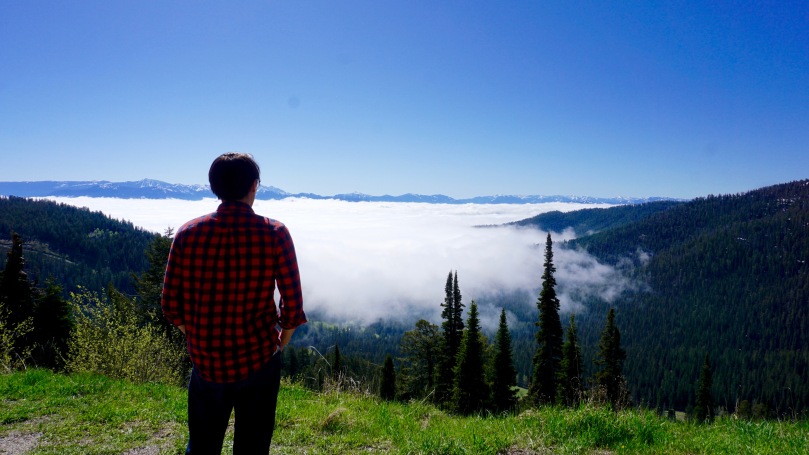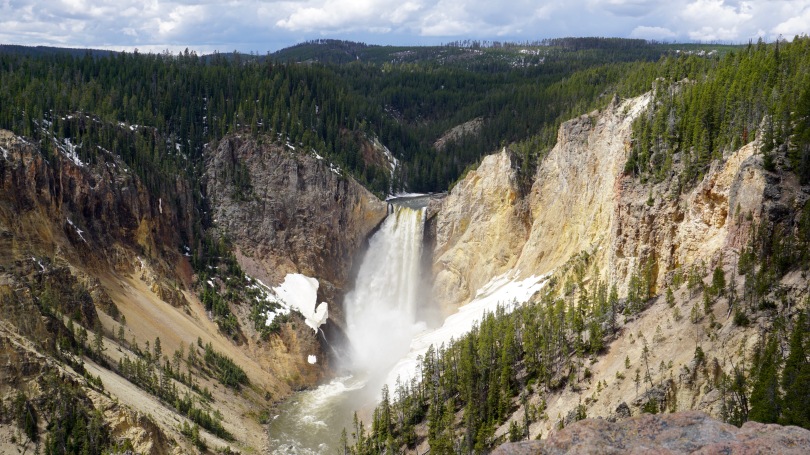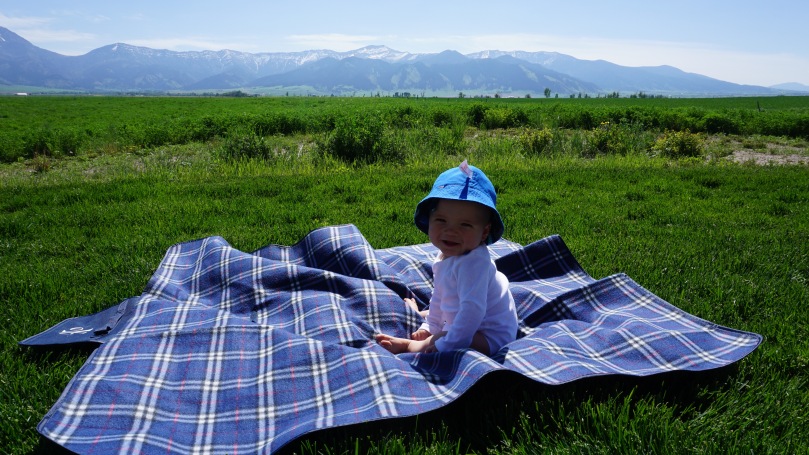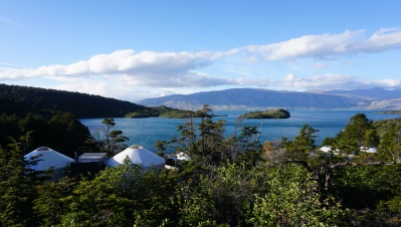
In 1872, President Ulysses S. Grant, signed into law, the establishment of the first national park in the United States…Yellowstone National Park. This massive national park covers a whopping 3,468.4 square miles; larger than the states Rhode Island and Delaware. 96% of the park is in Wyoming, 3% in Montana and approximately 1% in Idaho. The stories of Yellowstone and its spectacles are well known to people from all over the world – Old Faithful, the roaming bison, the brilliant springs, and the massive waterfalls.

I wanted to see for my own eyes, the landscapes, wildlife and magic, that inspired a country, to begin protecting and celebrating these areas known as National Parks. In today’s turbulent political climate, it seems as if our country has forgotten about these places, and we are unfortunately heading in the complete opposite direction. More and more wilderness areas are under threat each day, as efforts to seek new resources take priority. At this rate, who knows how much of our planet will be left in 40 years. I wanted to get away from work, politics and the debates and go explore the wild west for myself.

Sarah and I were fortunate enough to be able to rearrange our schedules to have 8 days (5/19-5/26) off together to explore Yellowstone and the Grand Tetons in Wyoming. We realized this was an ambitious trip, considering the fact that we were bringing our 7 month old boy along; but we were eager to adventure as a new family. I quickly learned that traveling with a baby, turned simple trips…into expeditions. We carefully thinned out our luggage so that we could make room for all of Minh’s clothing, toys, food and milk. He did remarkably well over both legs of the flight (Richmond to Atlanta then Atlanta to Bozeman) and then the three hour drive to Yellowstone National Park. We stopped frequently along the way to make sure he could eat, crawl around, and get some fresh air. I actually preferred the slower pace of traveling with a baby. It helped removed us from from our hectic daily routines and pace of life back in Richmond. Minh taught us to slow down and take everything in. We often found ourselves parked next to the road feeding and playing with him in the back seat or trunk. We took in the serene, roadside skylines of Montana and Wyoming without much care for anything else.

When planning a trip to Yellowstone, the lodging options are both varied and abundant. We were traveling with a baby so we knew that we wanted to be in the actual park. This would help cut down our travel time each morning and allow us to see as much of the park as possible. For those traveling with some more flexibility, there are several good options to explore, such as small towns just outside Yellowstone (ex. Gardiner and West Yellowstone) or even camping options within the park. We booked one of the last spots in the northern section of Yellowstone at the Canyon lodge. Despite traveling during shoulder season to avoid the crowds, all of the lodges seemed very busy. I could not imagine what it would be like during the summer (peak season).The next morning, we were eager to explore the raw and rugged spaces of Yellowstone in broad daylight. There certainly is a palpable pulse in the earth of Yellowstone. This massive park is centered over the largest super volcano on the continent. The landscape never lets you forget that you are treading over a sleeping giant of a volcano. From the steaming hot springs, bubbling mud pits to the spitting of geysers, this place is certainly alive……..and mighty.


As the first national park to be created, Yellowstone certainly makes you feel as if you are at the heart of it all. I’m glad that we packed for all different types of weather, because at 7500ft, things could change really quickly. In the early morning hours, the park is draped in a blanket of fog which clears usually by about 9:00am. We had sunny days for all of our time at Yellowstone which was very lucky considering the forecast predicting light rain and cloudy skies. In true mountain fashion, we were hit with a snow flurry as we were leaving the park. I was surprised to learn that it is not uncommon to get snowfall as late as July!I was also surprised to learn that it took me quite some time to get used to the high altitude. Strenuous activities tired me out faster than usual and I had a very mild headache the first 24 hours. The decrease oxygen concentration is certainly noticeable in my opinion and it is not recommended for people with pre-existing coronary artery disease to travel at such heights. This lower oxygen content could put the coronary arteries of the heart in a dangerous scenario of supply and demand mismatch, leading to worsening ischemia and therefore angina. So if you have pre-existing coronary artery disease, congestive heart failure, or pulmonary hypertension make sure you get cleared by your physician before. (my only medical plug in for this article).
Yellowstone is divided into villages which are centered around main attractions such as Yellowstone Lake, Old Faithful, Grand Canyon of Yellowstone and Mammoth Hot Springs. As a result of this set up, I feel like Yellowstone has a more “touristy” feel, than most national parks. During peak season, cars are lined up back to back and alongside the roads, with frequent stops as visitors often pull to the side for photos of bison or landscapes. One could always take the beaten path and venture into backcountry Yellowstone, for a more secluded experience. With Minh coming along, we actually wanted the “tourist” experience, with access to bathrooms, restaurants and drive-up landmarks to visit. I don’t think he’s quite yet ready for backcountry Ontario canoe camping ;).
We spent the next 4 days and nights exploring all quadrants of this magnificent land. We started each day at the Canyon Lodge for an early, hearty breakfast. We would then drive to the farthest part away from the lodge and then starting working our way back at each site. Although the main attractions (Old Faithful, Grand Prismatic Spring etc) were spectacular sights to see, I think my favorite parts of the park were the lesser known attractions such as the mud volcano and the mouth of the Yellowstone River as it opened up in to the grand canyon of Yellowstone. These were areas where you could get away from the crowds and listen to the breathing of earth below us.

The second leg of our adventure took us to Jackson Hole, Wyoming where we spent the next two nights at the Lodge at Jackson Hole. This was our home base for exploring the Grand Tetons and surrounding Jackson area. We were skeptical that we would actually see the tetons because of the predicted rain for the next two days. Still hopeful, we packed our lunches and head out to explore Grand Teton National Park. A short 30 minute drive from Jackson Hole, the teton range certainly has a different vibe than yellowstone. It had more of a national park “feel” that I was used to. The crowds were not as intense and the pace a little slower.
Miraculously, and I don’t know how, but we were blessed with unexpected sunshine that cut it’s way through the clouds and parted a view for us to the teton range. We watched in marvel as more and more of the Tetons emerged into fire before us. The sunshine stayed with us for the rest of the day. Unlike yellowstone, Grand Teton National Park is not situated over a super volcano. As a result, the landscapes are less raw, and more majestic, it appears a bit more hospitable to wildlife but I’m not a geologist or biologist. Within the first few hours in the park, the locals felt like showing off, we caught sight of a mother grizzly and her cubs, moose, elk, antelope and of course bison. We spent the day driving from site to site and sitting in the back of our car, playing with Minh and watching the sun, and clouds revolve through the most gorgeous landscapes.
Before we knew it, our time out west was drawing to a close. We had one last night left in Belgrade, Montana ahead of us before we went home. The drive from Jackson Hole to Bozeman, Montana was one of my favorite parts of the trip. The drive through Idaho was spectacular. We climbed high into the mountains before traveling through some of the flattest land I’ve ever seen. The 4 hour drive brought us just outside Bozeman where we would spent the night at Ross Creek Cabins, a set of charming small cabins run by a very nice couple, Steve and Karen. I highly recommend this place for anyone looking to exploring Bozeman and the surrounding areas. As we sat by the campfire reflecting on the past 7 days, we both realized that this was the first time that we were going to see a sunset out west! We put Minh to bed every night around 7:00pm so we haven’t seen a single one prior. As we sat there watching the orange and purple hues collide, with a gentle dry breeze across our face, I just thought one thing……I love this land.




































